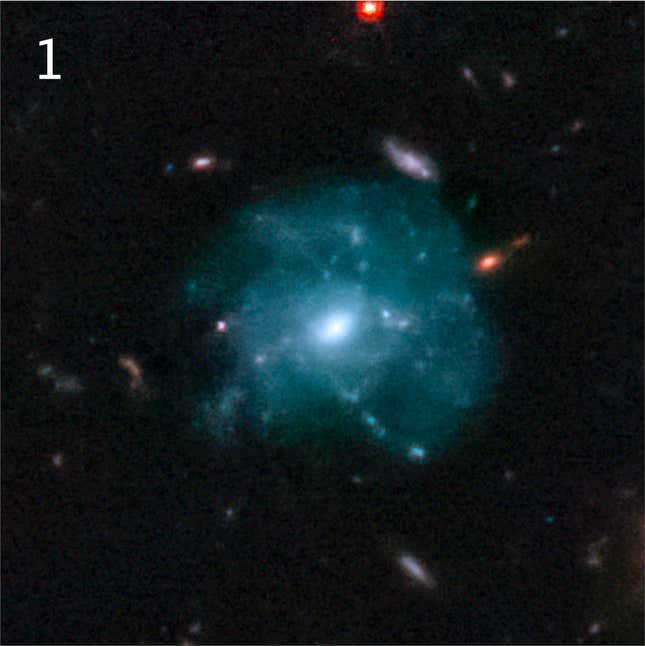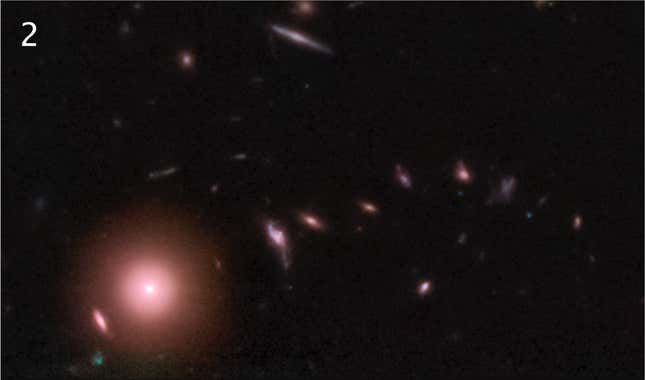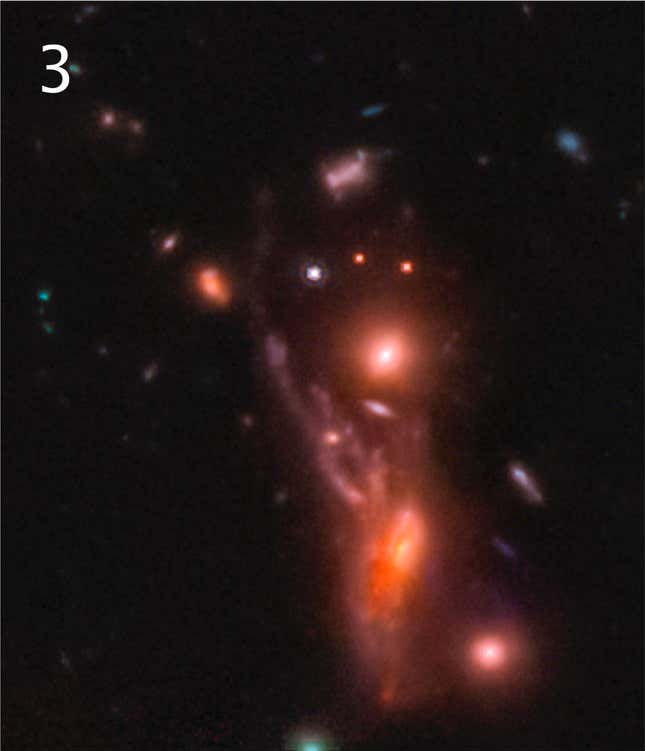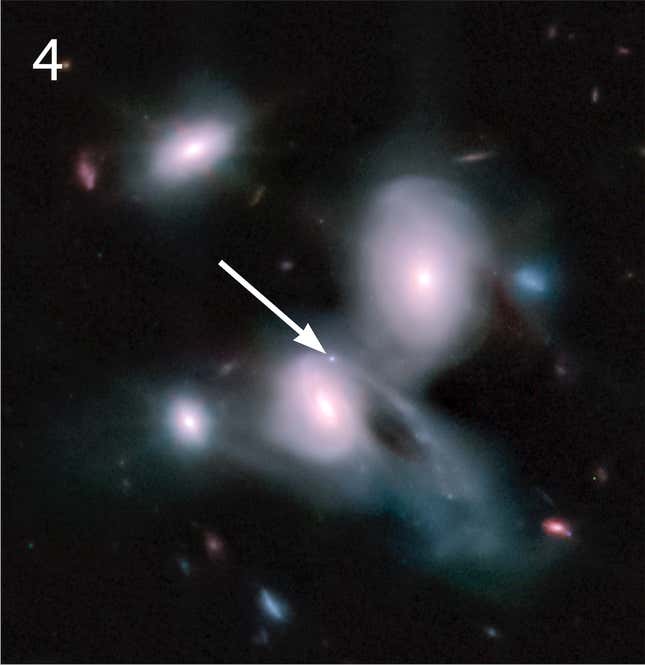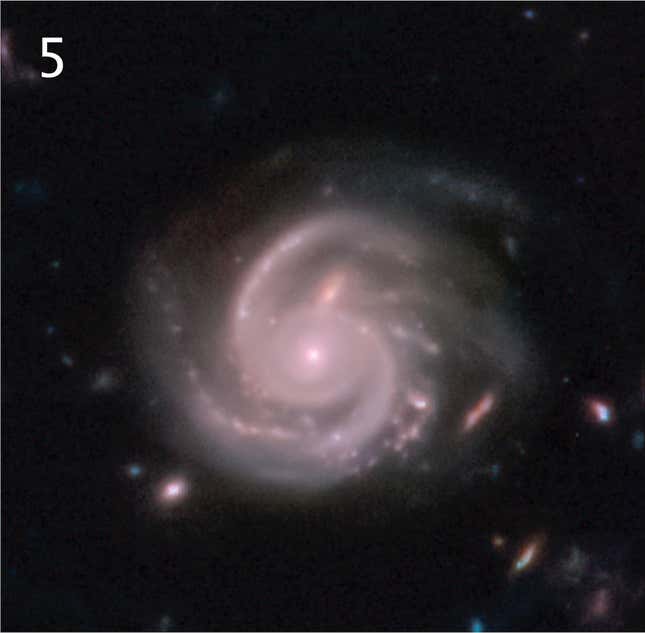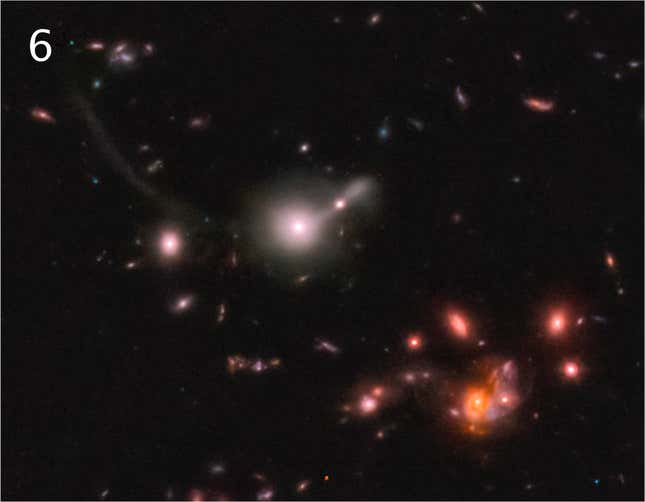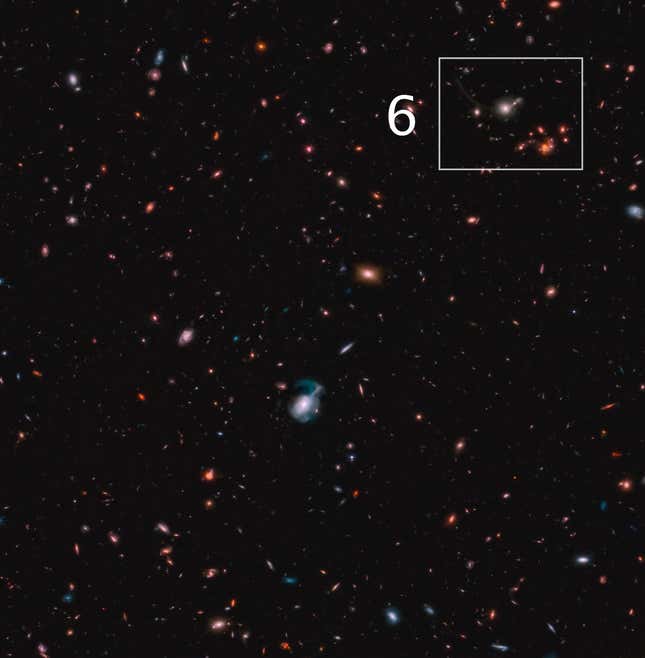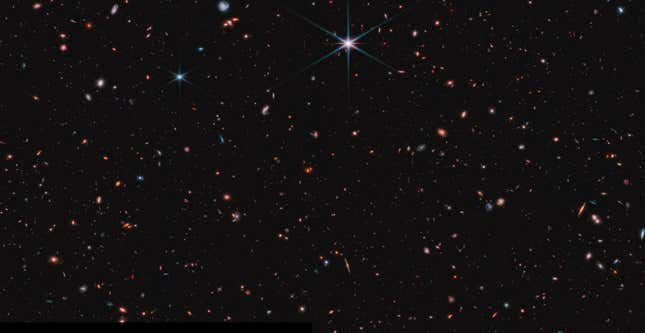
The Webb Space Telescope has taken its biggest image yet, exceeding the scale of the deep field image revealed by President Biden on July 12. The new image covers a region of sky eight times larger than the first Webb deep field, and it includes some dazzling structures from the cosmos.
The image—made up of a mosaic of 690 individual frames—was taken as part of the Cosmic Evolution Early Release Science Survey (CEERS). The images were taken in June, and Webb is scheduled to take another six (the last in a set of 10) in December, according to EarthSky.
The survey is a test of extragalactic surveying using Webb’s instruments, and it will focus on some of the earliest galaxies and their structures, as well as the physical conditions and growth of stars and black holes. It’s focused on a part of the sky called the Extended Groth Strip, near the handle of the Big Dipper. Because that region of the sky is dim (there aren’t particularly bright or nearby light sources), it’s easier for Webb to see more distant and fainter light sources.
The data captured in the composite image was collected by Webb’s NIRCam and MIRI, instruments that operate in the near- and mid-infrared wavelengths, respectively. The image is less than half of the data the team will ultimately collect for the survey.
In the full-scale .tif images (which can be found here), you can zoom in deeper and deeper until you completely lose sense—or perhaps better understand—the sheer scale of the cosmos. Here are some particularly intriguing objects.
